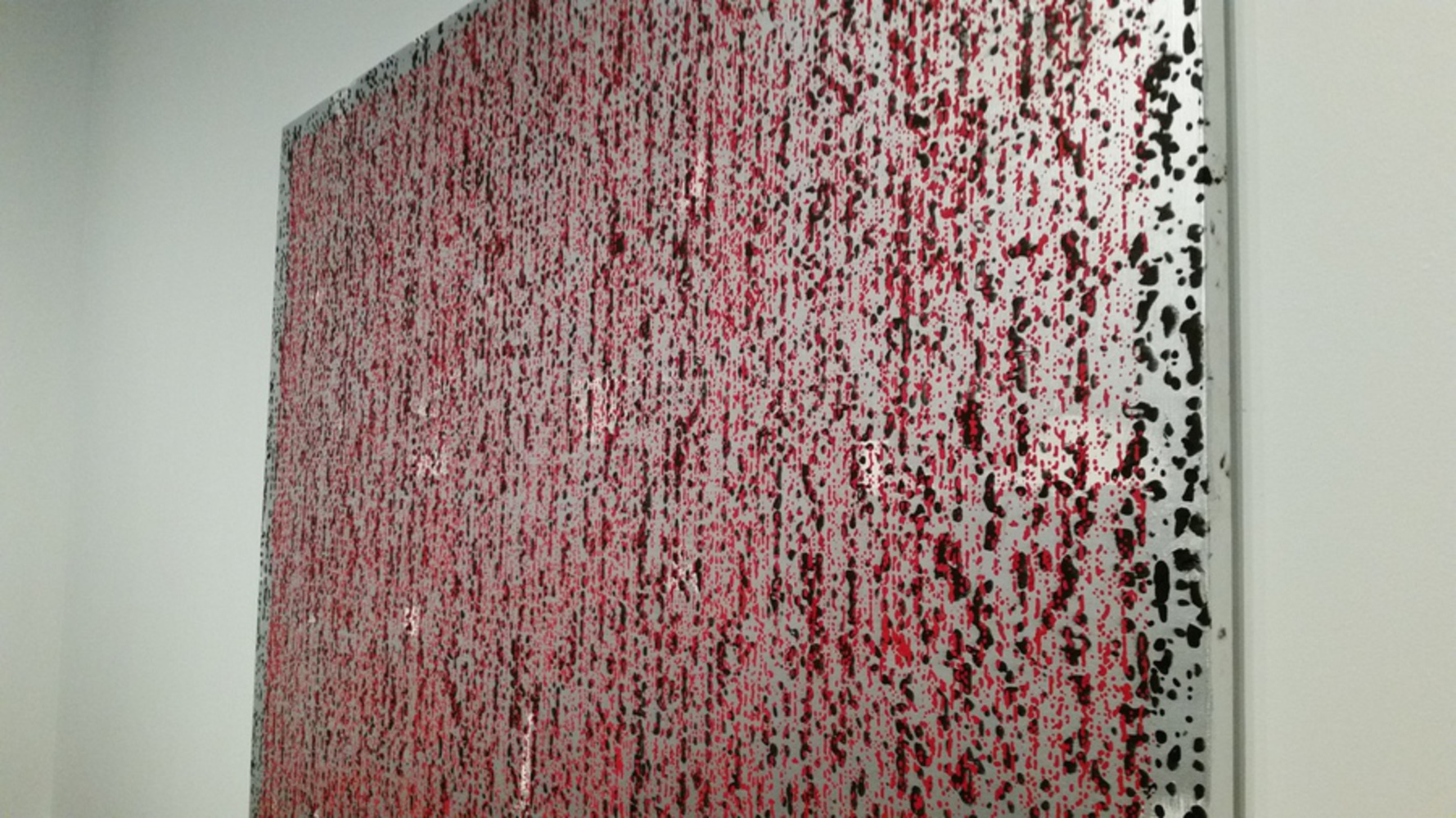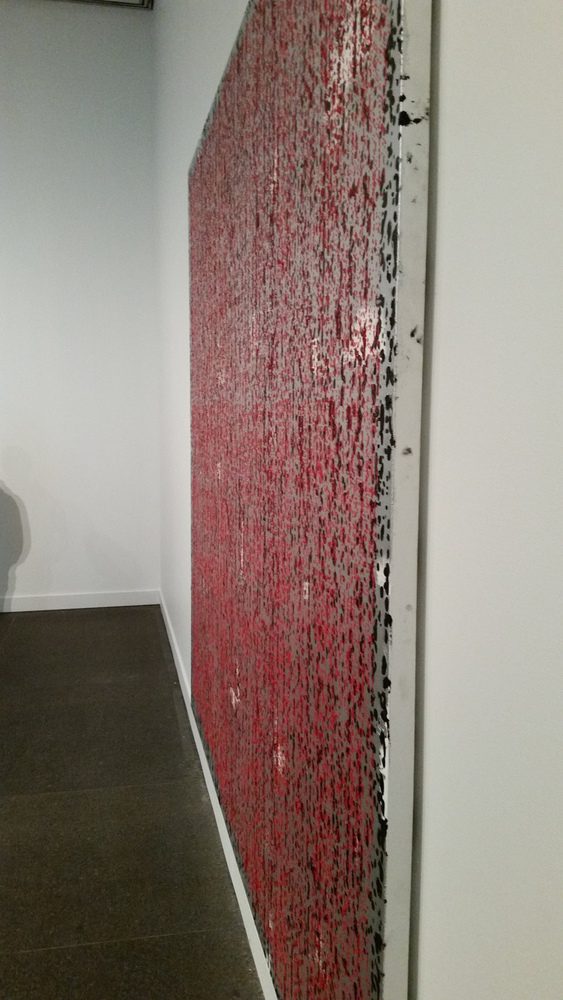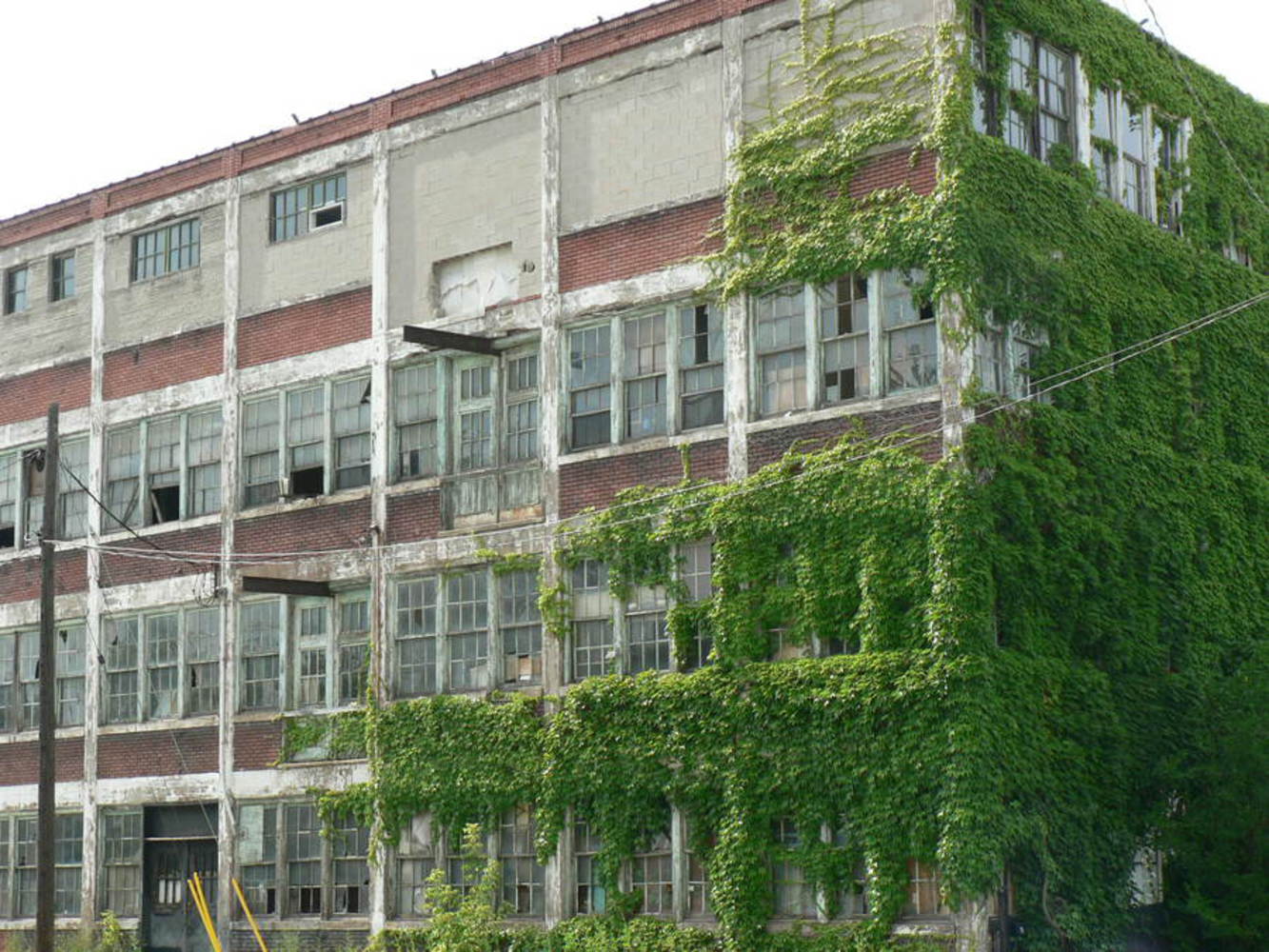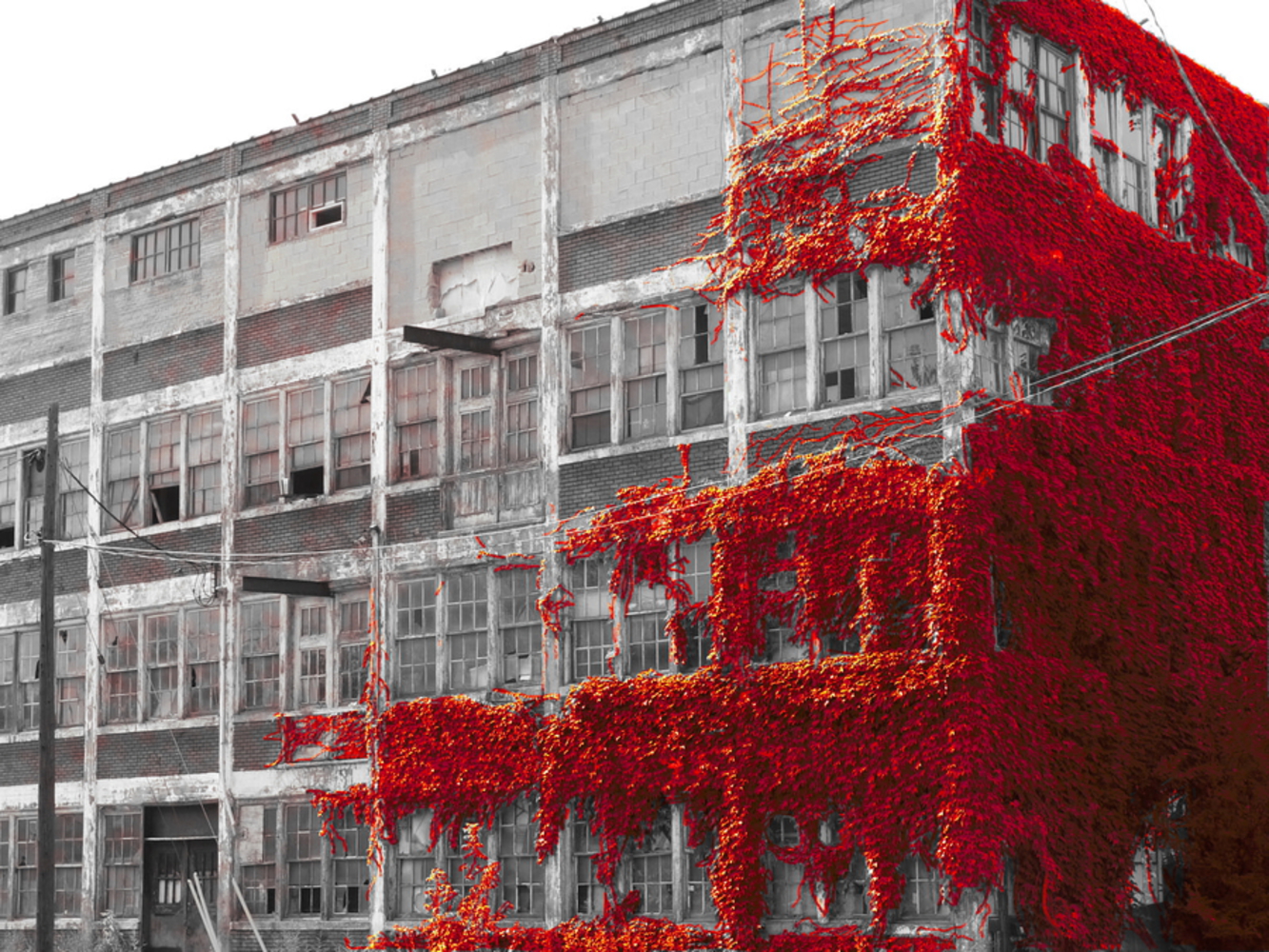Experience and Response
All of Humphries’s paintings in the gallery seemed a bit alien, but this was the first that caught my attention and was the most unsettling, partially because of how different it was from the three others in the same room. While the others contained mostly uniformly sized circles and smeared colors, this work contained an uncountable number of small, distinct dots, though still generally arranged vertically.
The red paint drew my eye first, and I imagined blood dripping down from the top of the canvas. As I walked around the painting, however, it seemed that the red paint was in the topmost layer, especially apparent when the black dots all but disappear when viewing the painting from the side. Thus, the red seemed organic and voluminous, some sort of blood-red plant that grew over the rest of the painting, in the process of covering the background. Naturally, my mind wandered to the “red weed” described in H.G. Wells’s “The War of the Worlds” and portrayed in the 2005 movie of the same name. In one scene, the main character walks outside to find the landscape covered in the red weed, thought to be fertilized with harvested human blood.
The black drips were reminiscent of small oil droplets, especially on the metallic, reflective background. This added a sort of mechanical element to the painting, in contrast with the plant-like growth on top of it. The silvery background was encompassing yet dull, and seemed to add a tangible, metallic feel to the entire painting that I almost thought I could smell.
As a result, the painting as a whole was, to me, a juxtaposition of the organic and inorganic, natural and mechanical, though entirely alien and unsettling.




